Do we only belong at the back of the stage?
By Jon Liebman
Week of August 26, 2019
This week, we published an upbeat interview with Jacob Lowery, bassist with the Michael McDonald band. In addition to some inspiring banter about Jacob’s musical upbringing, career highlights, and paying homage to Tiran Porter’s killer Doobie Brothers bass lines, the conversation also included an interesting perspective about what role of the bass player “should” assume.
We’ve all heard the clichés about the bass player being relegated to the background, standing at the back of the stage, dutifully supporting the rest of the band. As Jacob observed, anyone who chooses bass doesn’t want to be in the forefront, and is content to play that supportive role. He went on (half jokingly?) to say that the only time anyone turns around to look toward the back of the stage is when the bass player screws up!
The bass, traditionally, does play a supportive role. The original function, regardless of genre, was simply to provide the low end. Subsequently, the groove element became an important component of the bass player’s job. Eventually, the instrument broke free from the confines of being exclusively a “background” instrument, thanks in no small part to players like Jaco Pastorius, Stanley Clarke, Billy Sheehan, Victor Wooten, and many others.
So is there a wrong and a right?
Well, there kind of is, and there kind of isn’t. The primary function of the bass is still to lay down the groove and make the music feel good, without (consciously) being in the forefront. James Jamerson, for one, did a mighty fine job in that role, as did Carol Kaye, Lee Sklar, and many other highly respected bass players known more for their strength as solid groove makers and timekeepers than bass “shredders.”
If you’re trying to become a good bass player, don’t lose sight of what’s truly important to the music. Lay it down and make it groove, knowing that you’re the one making everyone feel good. Members of my online lessons at For Bass Players Only understand this point very well!
If you want to learn two-handed tapping, or become a master of a mega-extended range bass, that’s beautiful. There’s definitely an audience for that. Just be sure you know how to take care of business first, regardless of your proximity on the stage. The band will appreciate it. Even if they never turn around.
Have a thought on the subject? Leave a comment below and let me know what you think.
In the meantime, check out my interview with Jacob here.
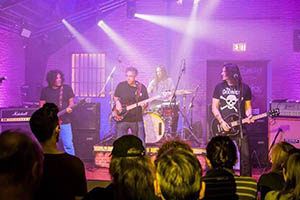

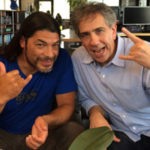

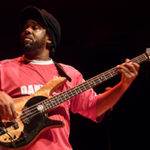
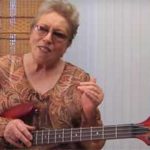
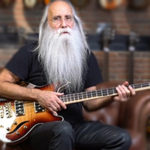
My role today is that of bass player in a 3 piece Classic Rock cover band with a couple originals. Our guitarist is awesome but the band isn’t named after him. So we each matter. Some songs I play a classic Motown sound thump beat and others I’m almost as raucous as Lemmy.
So many pop/R&B songs were quickly identified by the bass part that even though there is a great groove, it also has a thematic element that listeners respond to immediately. Think about the bass parts to I Want You Back, Gimmie Some Lovin, I Got You, and hundreds of Motown hits. They are all groove parts but have a melodic hook at the same time. People can name the tune by the bass part before the melody of the song begins.
In jazz, many of my favorite albums have no bass solos. They have killing, walking bass lines or even eight, note grooves. Miles Davis Quintet with Ron Carter on albums like ESP, Nefertiti, The Sorcerer, Miles Smiles and Wayne Shorter’s Ju Ju or Speak No Evil and many more.
Horses for course imo.
Some songs require a solid seat on the root, others allow and require more freedom. As a bassist, I look to players like Jamerson and John Paul Jones who provide strong melodic counterpoint. The bass lines in songs such as Ain’t No Mountain High Enough and Good Times Bad Times see the bass player playing contrapuntally to the melody and adding great depth and flavour to the song.
I thing the age old advice ‘play for the song’ applies here. It’s up to each individual player to decide what works for them, their band and the song. As musicians, however, I disagree that anyone else can tell you what you can or cannot do. So play the root, walk it, create a melody, slap the hell out of it , tap it , pinch harmonics or whatever to your hearts content!
There’s a Jack Bruce interview in Guitar Player Magazine from around 1977 or so (I no longer have the copy so the year could be off by several on either side). He said “Just because the bass has a traditional role to fulfill, that doesn’t mean one has to fulfill it in the traditional manner.” That succinct summation is what’s inspired my bass playing.
When I started gigging it was in bands doing mostly popular country music of the era (I started in ’76) like Haggard, George Jones, Ray Price, et. al., some old R’n’R, Creedence, etc. My background listening to Cream, Jefferson Airplane/Hot Tuna, Allman Bros., etc. didn’t seem to mesh on the surface, but it all comes together with the common “serve the song”. “Good Hearted Woman” suffers if I play more than that R/5 thing. But that’s not universal across the genre, so I focused on playing the song (NOT the recording!) with THIS drummer and THIS guitarist and THIS singer here tonight.
So the “right” role of the bass player is ever the same- Define the harmony AND connect the purely rhythmic part to the harmonic/melodic part. To eschew one half of that role for the other is a disservice to the music. With some bands (songs, gigs) there is more need for the rhythmic focus nd some for the define the harmony part. But whether is Scott Lafaro with Bill Evans, Bee Spears with Willie Nelson, Jaco with Joni, Duck with Otis, Jerry with Aretha, it’s still the same, simply different articulations of it.
W